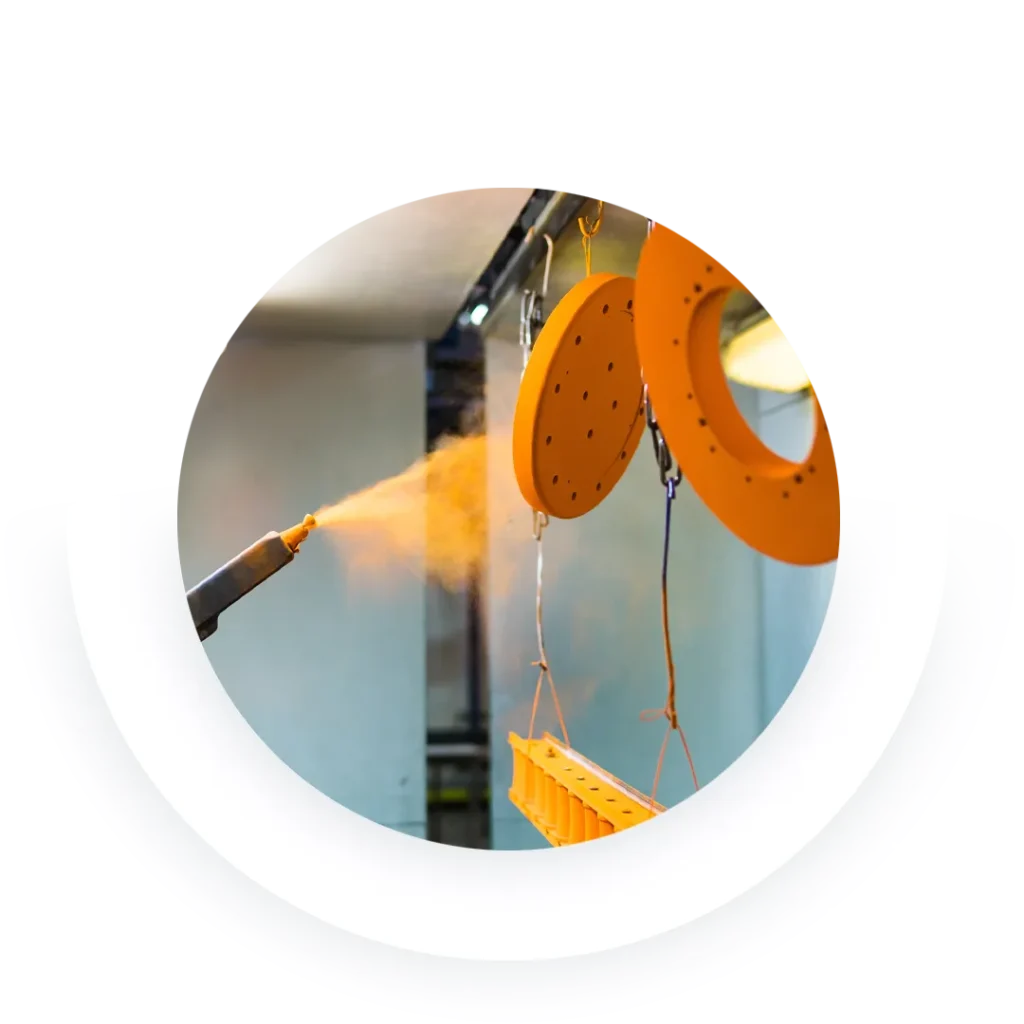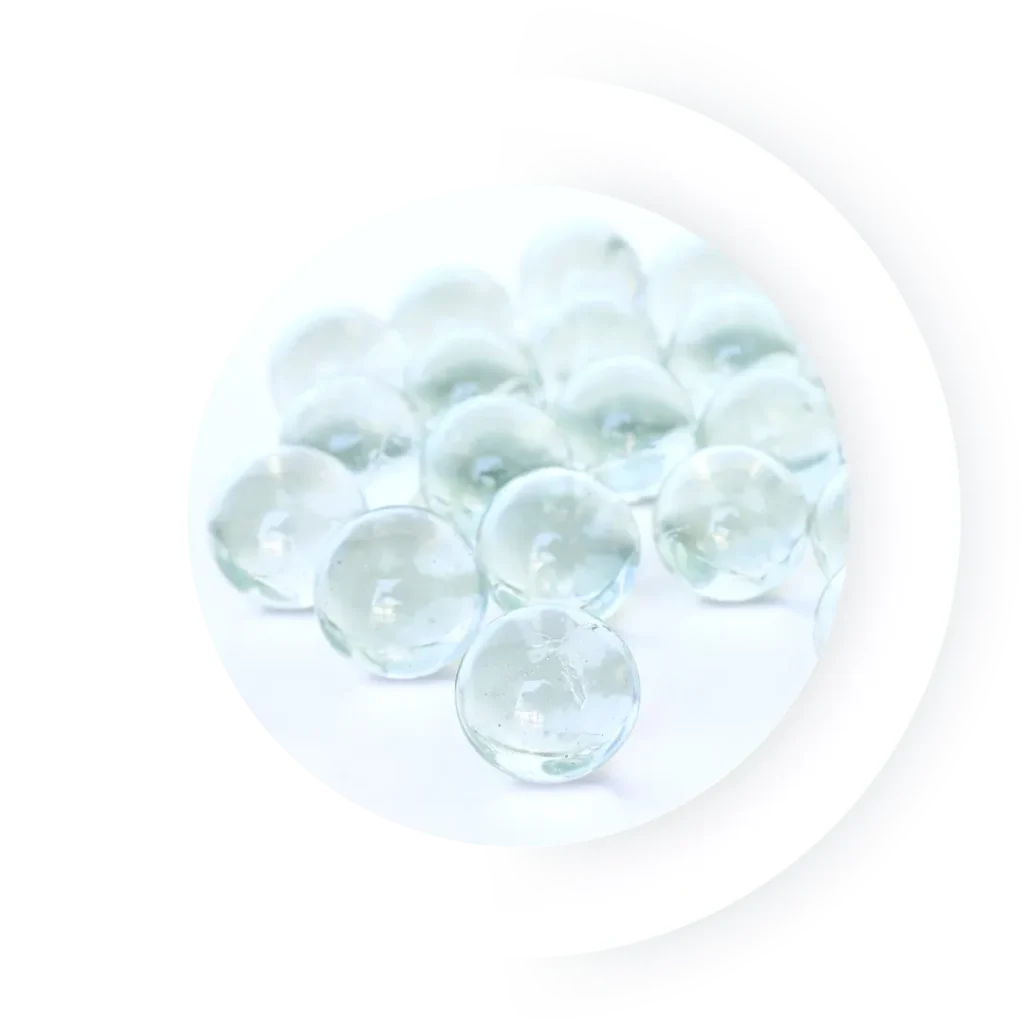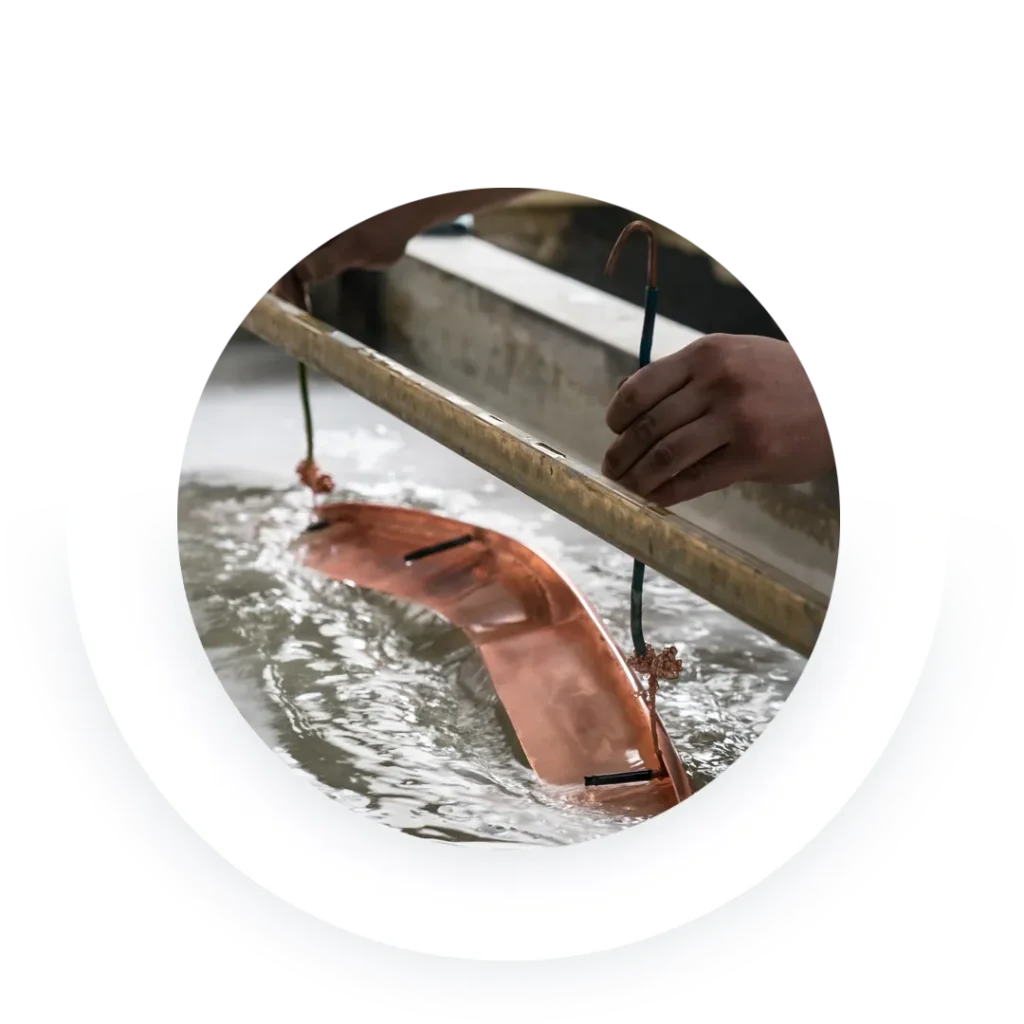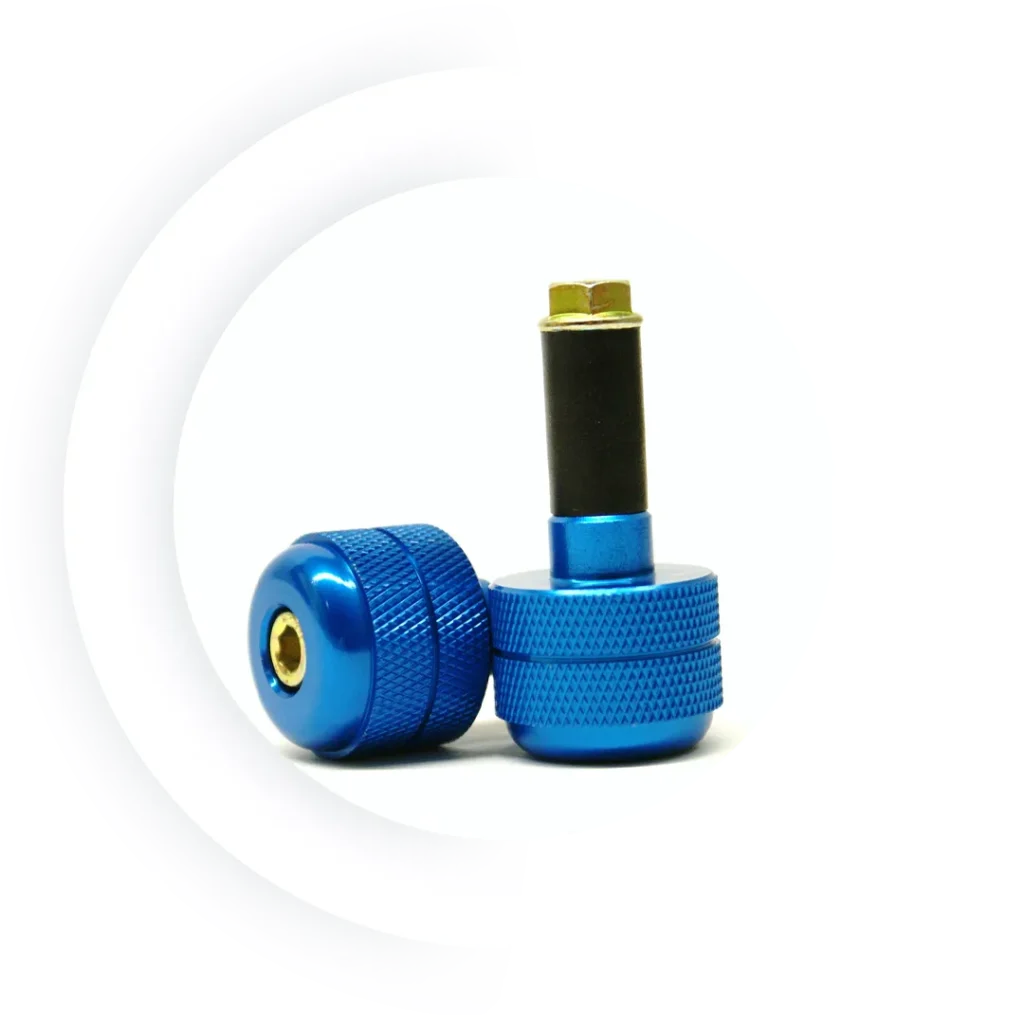Components. High-Quality. Finished.
Product
finishing
When parts and components come off our CNC turning or milling machines, they are machined exactly per specifications and, in terms of shape and performance, are ideally prepared for their intended use. However, some projects require certain surface characteristics in order to improve the protective and/ or visual qualities of the parts and components. When it comes to improving durability and aesthetics, we consult with specialized partners from our network in order to deliver the best possible solution to our customers.

Would you like to learn more about the best finishing options for your parts and components?
Glass bead blasting
Our glass bead blasting process enables us to further treat the surfaces of CNC turned or milled parts and components. With this finishing technique, the glass beads act as an abrasive and gently remove surface impurities and layers of oxide without damaging the object’s surface. We recommend this secondary treatment especially on delicate types of surfaces.
When treating parts made from stainless steel, the glass beads, which are being blasted under high pressure onto the surface, achieve an even and satin surface finish. Parts made from other metals will receive a high-quality surface finish as well.
This method also lends itself for the preparation of further finishing steps, such as preparing surfaces for coating for example.

Other finishing techniques
We also offer other finishing processes for your parts and components to further improve and protect their surface qualities.
Here are some common procedures, which we can offer through the services of our dependable partners:

- Galvanizing: by immersing the metal part into an electrolyte bath, a thin layer of a separate metal, such as zinc or chromium, is being applied onto its surface. The advantages of galvanizing are improved corrosion protection and aesthetics at low cost per unit, which makes this technique very appealing to customers.
- Anodizing/ hard anodizing: Aluminum or aluminum alloys can receive a protective layer, which is being achieved by electrolytical oxidation. This process improves surface hardness, durability and its anti-corrosive properties. It can also be used to change the part’s color in order to create a decorative surface.
- Powder coating: These coatings prevent corrosion, wear or chemical damage and can be applied to metal surfaces for aesthetic reasons.
- Lapping: This process uses an abrasive paste applied to a lapping plate or tool. The lapping plate or tool is being moved against the material in a way that removes irregularities, scratches or other imperfections from metal surfaces.
- Staining and passivation: This technique is used for the removal of surface contamination and produces a clean, corrosion-resistant surface. Staining removes layers of oxide, while passivation applies a protective passive coating.
- Polishing, smoothing and sanding: Through these mechanical processes surfaces are being cleaned from unevenness and irregularities, resulting in a smooth and shiny finish.
- Hardening/ Annealing: This finishing technique makes the material more resistant to wear, deforming or breaking. This is done by heating the parts and components to a material-specific temperature.
- Laser engraving: With our marking laser, we can apply inscriptions (i.e., logos, pictographs, batch- or part numbers etc.) onto the finished parts and components.
These finishing techniques are being used to increase the functionality, durability and aesthetics of metal parts in order to customize them for the intended uses and purposes. The selection of the best finishing process depends on many factors such as material, intended properties and/ or future purpose for the parts or components.

Carefree logistics
Additional processing steps on an otherwise finished product require solid organizational skills and logistics in order to keep the total production time all the way through the final product at a minimum. Especially, when external partners are required for the job. We can save the customer a lot of time and work, because of our long-standing experience and dependable network of specialist partners and service providers. GDFT will take on the communication and coordination with all external specialist companies, as well as take care of all logistical aspects from delivery, storage and distribution.

List of common finishing techniques:
- Galvanizing
- Anodizing/ hard anodizing
- Powder coating and painting
- Lapping
- Staining and passivation
- Polieren, Glätten und Schleifen
- Hardening/ Annealing
- Laser engraving
Do you need your parts to be finished after production?
